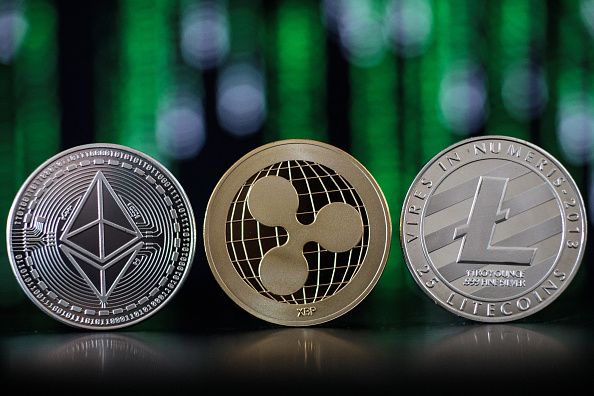(Bloomberg Opinion) -- People have a love-hate relationship with the futures markets. Futures are either financial drivers of rapid economic growth, turbocharging small amounts of capital to outflank entrenched barriers to innovation, or — to a populist — they are demonic pits where speculators manipulate prices and corrupt honest real economic activity. Since people also love or hate cryptocurrency, the rise of Bitcoin futures trading in 2019 is controversy-squared.
Looking past overheated rhetoric, Bitcoin futures exemplify the maturing of crypto markets. Futures trading has grown from almost nothing to about 50% of spot trading, according to data from 13 top exchanges.(1) It has reduced both actual and implied volatility, increased liquidity, broadened the investor base, improved portfolio management and soothed regulatory concerns. We’ll remember 2019 as the year the path to peaceful coexistence between crypto and established markets became clear.
Before going further, it’s important to remember that the promise of crypto is in the real code base and real networks being built to support real activity. This is slow, technical and boring. What matters is how people use crypto and how that changes their lives. Crypto can be successful without rising coin prices, or even with no exchange of crypto for traditional currencies at any price. On the other hand, if crypto fails to deliver on its technical promises, then the coins are likely worthless. So all the drama of how many dollars people pay for Bitcoin or what regulators think is a sideshow to the disruptive innovation crypto promises.
There are two dimensions to the rise of crypto futures. The first is that in 2019 all the major crypto exchanges are offering futures trading along with crypto borrowing and lending. It’s now easy for any crypto owner to earn interest—usually around 10%, very attractive for inflation-proof currencies—on their holdings, as well as to make leveraged bets for or against crypto for future delivery.
The second dimension is less dramatic. Part of the peak excitement in 2017 was the introduction of cash-settled Bitcoin futures trading on the Chicago Board Options Exchange and the Chicago Mercantile Exchange, along with physical-settled futures and options on LedgerX -- all Commodity Futures Trading Commission-regulated exchanges well-known to institutions.
Despite the slow start, and the decision earlier this year for CBOE to drop their contract, regulated futures trading volume and open interest have followed Moore’s law, doubling every 18 months. True, open interest is only 0.1% of total Bitcoin supply, but even small numbers attached to exponential growth rates are worth noticing.(2)
Talking to traders and market-makers in major-exchange crypto futures suggests the open interest is real-money investors — individuals and institutions transacting for their own accounts for long-term exposure rather than levered intermediaries making bets that might reverse tomorrow — putting in new money.
At the moment, the $200 billion market capitalization of crypto probably represents only about $10 billion of real money invested—the rest is paper profits. This is one source of instability that makes crypto prices volatile. If open interest in regulated futures continues doubling, it represents a steadily increasing source of real money to stabilize prices. That doesn’t mean it will push prices up—a point often missed by crypto enthusiasts—but it does mean whatever prices result will be more reliable.
A popular misconception is futures trading on the less-regulated crypto exchanges is undercapitalized day traders switching from spot to futures. This does not seem to be true. Futures trading seems dominated by solidly capitalized crypto entities—miners, dealers, venture investors, issuers, lenders, businesses—managing portfolio exposures. This adds a further stabilizing force.
Cryptocurrencies may or may not revolutionize everything. If it does, it may or may not shower spectacular profits on investors. The rise of Bitcoin futures in 2019 suggests that if the shower occurs, it will be more nuanced and rational than what we have seen in prior crypto booms—fewer unexpected cases of instant riches to seemingly random individuals, more moderate additions to average portfolio returns of millions of diversified investors.
(1) The exchanges are CME/Globex, Bakkt, Binance, Bitfinex, HuobiDM, Kraken, FTX, Bitz, Deribit, CoinFLEX, Bybit, Okex and BitMEX.
(2) We had a mini-repeat of history in September when ICE (NYSE:ICE) introduced physical-settled futures, a price run-up in anticipation and a sharp decline when volume proved disappointing.
